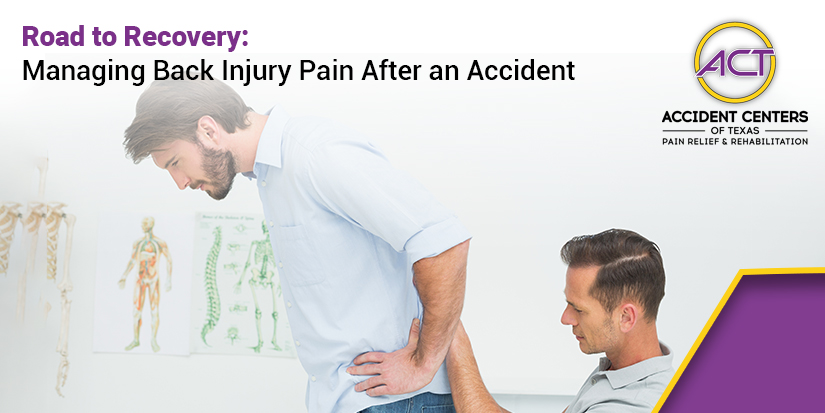When it comes to recovering from back injuries sustained in an accident, effective pain management and promoting a successful recovery are paramount. These injuries can have a profound impact on one’s dailRoad to Recovery: Managing Back Injury Pain After an Accidenty life, making it crucial to understand the steps and strategies necessary for healing and regaining control.
Common Types of Back Injuries –
Back injuries can vary in type and severity. Herniated discs are a prevalent injury, characterized by the displacement of spinal discs. Understanding the causes, symptoms, and effects on mobility and quality of life is essential for effective treatment. Sprains and strains, caused by sudden movements or excessive force, can lead to pain and restricted movement. Identifying the symptoms and understanding the recovery time and treatment options are crucial. Fractures, such as vertebral fractures, can occur due to the impact of an accident. Recognizing different fracture types and associated symptoms is important for determining the appropriate treatment approach.
Recognizing Symptoms and Seeking Medical Attention –
Recognizing the symptoms of back injuries is vital for early intervention and treatment. Symptoms may include persistent pain, stiffness, limited range of motion, and even numbness or tingling sensations. Seeking medical attention promptly allows for a thorough assessment of the severity of the injury and guides the selection of appropriate treatment options.
Treatment Options for Back Injury Pain –
Effective treatment for back injury pain involves a multi-faceted approach. Physical therapy plays a crucial role in rehabilitation, focusing on exercises and stretches that improve strength, flexibility, and overall function. Chiropractic care utilizes manipulative techniques to provide pain relief and restore spinal alignment. Pain management techniques, including medications and injections, are available to alleviate discomfort and enhance quality of life. Non-invasive approaches, such as acupuncture or transcutaneous electrical nerve stimulation (TENS), can also be beneficial. In severe cases, surgical interventions may be necessary to correct structural abnormalities and promote healing. Understanding the potential benefits and the recovery process associated with surgery is vital for informed decision-making.
Self-Care Strategies for Managing Back Pain –
Complementing professional treatments, self-care strategies can significantly contribute to managing back pain. Maintaining proper posture throughout daily activities is crucial for reducing strain on the back. Engaging in gentle exercises and stretches recommended by healthcare professionals can help improve flexibility and strengthen the surrounding muscles. Utilizing heat or cold therapy, such as warm compresses or ice packs, can provide temporary relief. Practicing relaxation techniques, such as deep breathing or meditation, can help alleviate stress and promote overall well-being. It is important to remember that self-care practices should always be followed in consultation with healthcare professionals to ensure their appropriateness for individual conditions.
Rehabilitation and Recovery –
Rehabilitation is a vital component of the recovery process for back injuries. Under the guidance of healthcare professionals, individuals engage in targeted physical therapy exercises aimed at improving function, mobility, and strength. These exercises focus on core stability, flexibility, and gradually reintroducing activities of daily living. With dedication and perseverance, individuals can regain their independence and return to their normal activities, allowing them to reclaim their quality of life.
Recovering from back injuries requires a comprehensive approach that encompasses effective pain management, professional treatment, and self-care strategies. By recognizing the symptoms, seeking timely medical attention, and following a well-rounded treatment plan, individuals can embark on the road to recovery. Remember, the journey may be challenging, but with the right support, dedication, and commitment to self-care, it is possible to overcome back injury pain and thrive once again.







